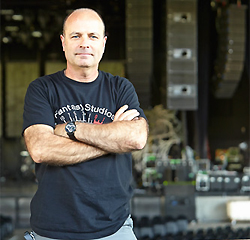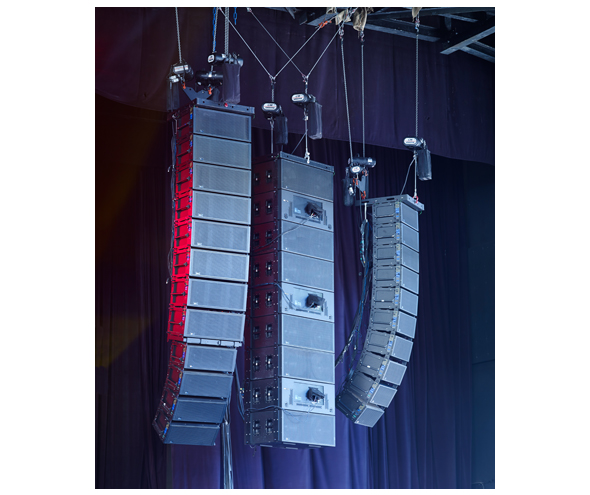
BB: Moving on to bass. Sub energy is quite different in the studio and in large-scale concerts since studio recording rooms and control rooms are acoustically designed to control bass. That’s not the case in arenas and amphitheaters.
JY: I’ve always been bothered by the huge lobe down the middle of the venue, and the null occurring slightly off center. It’s maddening to have to mix knowing you have to “surf” in the huge wave of sub energy at mix position to make it right throughout the venue.
I’ve been trying various methods for years to equalize the sub energy so that the audience is hearing a relative reference of what I’m hearing at FOH.
I’ve pretty much tried everything, from craftily designed sub stacks and center sub floor clusters—which I often couldn’t get away with because of objections from the artist or set designer—to time offsets to help steer bass energy off center and outwards.
BB: Did you employ different techniques for indoor versus outdoor venues?
JY: Cardioid arrays are great for controlling side and rear sub energy. In general, most methods work similarly indoors and out, but in tall arenas the vertical coverage issue has to be addressed as well.
Journey likes a “clean” stage sound, so keeping the low end off the stage is a major objective. We use nine-deep arrays of 1100-LFC cabinets per side, with the middle cabinet of each group of three facing backwards to facilitate the cardioid pattern. We turn the subs outwards at about 20 degrees so that the rear cancellation point aims toward the musicians on stage, instead of straight back into monitor world or the side of the stage. It works great, and our musicians are very grateful for it!
BB: Has your perception of low-end control changed over time?
JY: It still seems to be the “final frontier” of great audio. There has been a renewed focus on cardioid sub arrays lately, which helps out hugely on stage, but the greater problem in my opinion is the large expanse of the audience and how to cover that area evenly with reduced lobe and null effects. I’m hopeful that the entire audio industry will direct more effort to this so that the low-end experience will continue to rise for the audience and musicians.
With more than 25 years of touring experience as a systems tech and FOH engineer, Jim Yakabuski also has worked behind the board for Van Halen, Jon Secada, Ted Nugent, Engelbert Humperdinck, Whitesnake, Julio Iglesias, and Matchbox Twenty, among others. He is the author of the book “Hal Leonard Professional Sound Reinforcement Techniques.”
Also, noted engineer Buford Jones will be interviewing Jim in an upcoming mixing workshop webinar, discussing his mixing career as well as techniques. The sessions are taking place on October 1 and 2, and are open to registration here.
And, VER Tour Sound supported the Journey/Steve Miller tour as the audio supplier and provided a Meyer Sound LEO linear sound reinforcement system.
Bruce Borgerson has been a freelance journalist and audio industry communications consultant since the 1980s. He has written numerous feature articles for Mix, Pro Sound News, Sound & Video Contractor and Church Production, as well as for ProSoundWeb.

